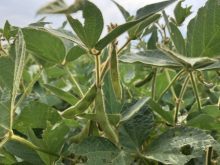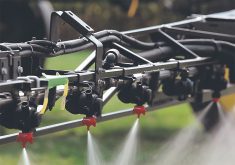American hunters are flocking to Saskatchewan’s rural communities in record numbers and when they arrive, they’re dropping more than just ducks and geese. They’re also dropping millions of dollars into the tills of coffee shops, hotels and retail stores.
According to a recently released report commissioned by Saskatchewan Environment, hunters from the United States and other Canadian provinces spend nearly $15 million in the province each year.
That money, combined with another $55 million that is spent by Saskatchewan hunters, creates the equivalent of 270 full-time jobs each year, the study said.
Read Also

No special crop fireworks expected
farmers should not expect fireworks in the special crops market due to ample supplies.
The report also suggested that the number of American and foreign hunters who visit Saskatchewan is rising steadily.
Statistics collected over a 10-year period showed the number of Saskatchewan hunting licences sold to foreign residents jumped from about 11,000 in 1995 to nearly 17,500 in 2004.
Foreign hunters, who now hold nearly 20 percent of all hunting licences sold in the province, spend an average of $1,285 each time they visit the province.
The report, Economic Evaluation of Hunting in Saskatchewan, was based on a survey of 1,100 hunters including 375 Saskatchewan residents, 349 hunters from other parts of Canada and 376 visitors from the U.S. It was prepared by Derek Murray Consulting Associates of Regina.
Brent Kennedy, manager of Saskatchewan operations for Ducks Unlimited Canada, lauded the report, calling it a firm reinforcement of the role hunters play in supporting rural prairie communities.
“The contributions of hunters and anglers are tremendous to the economy and to conservation alike,” Kennedy said.
The hunting study, which dealt only with non-outfitted hunts, was one of three reports commissioned by Saskatchewan Environment to assess the economic impact of hunting and fishing in the province.
The other two studies examined sport and commercial fishing trips and outfitted hunting and fishing excursions.
Together, the three studies suggested that visitors involved in outfitted and non-outfitted trips spend more than $300 million in Saskatchewan annually, or roughly 20 percent of the $1.4 billion spent on tourism each year.
Shelley Anderson, who runs a motel and coffee shop in Naicam, Sask., said the income derived from American hunters during waterfowl hunting season represents a major portion of her annual revenue.
Anderson and her husband took over the business last year and “the hunting customers just kind of came with the motel,” she said.
“We make as much income during those two months as we do during the other 10 months put together,” she said.
“It’s a really big deal, not only for us but for the whole area.”
According to Anderson, repeat visitors come from Texas, California, Minnesota, Wisconsin and a variety of other U.S. locations.
And when they arrive, they are generous spenders.
“They’ll pay for their rooms, they buy their gas here, they get their ice here, they buy their breakfasts here, lots of them eat their suppers here and they’ll buy any souvenirs you’ve got as well. They’re definitely not stingy.”
Anderson said the majority of customers that patronize her business have been visiting the area for years and are familiar with its landowners.
“They like the people,” she said.
“They get to be friends with the farmers in the area and the restaurant owners and once they get to know the people, they’ll come back year after year after year.”
The report, which also gauged foreign hunters’ attitudes, suggested that many U.S. hunters oppose legislative changes that would make outfitted hunts mandatory.
A significant number of foreign hunters surveyed indicated that activities such as meeting farmers and seeking permission to hunt on their land are an important part of the overall hunting experience.















